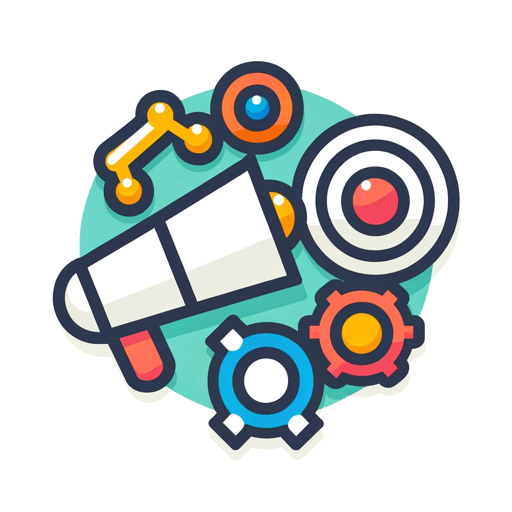Data Analytics-advanced data analytics tool
AI-powered data insights
How do you use ChatGPT for data analysis?
Work out an example use case
What are the top plugins for data analysis?
What's Luke's course about?
Related Tools
Load More
Advanced Data Analysis
Advanced data analysis assistant offering insights and guidance.

Data Science
Expert in data analysis and visualization.

Data Analyst
Data Analyst designed to guide users through data cleaning, visualization, data analysis, statistical analysis, and machine learning with practical code snippets and clear explanations

Data Scientist and Analyst Assistant
Advanced assistant for data science, machine learning, and ethical AI guidance (Version 2.0)

Data Analyse
Data Science Expert analyzing user-uploaded data to provide accurate insights.

Data Engineering and Data Analysis
Expert in data analysis, insights, and ETL software recommendations.
20.0 / 5 (200 votes)
Introduction to Data Analytics
Data Analytics involves examining datasets to uncover trends, patterns, and insights that inform decision-making. It encompasses a range of techniques from simple descriptive statistics to complex machine learning algorithms. Designed to transform raw data into valuable insights, Data Analytics helps businesses optimize operations, understand customer behaviors, and predict future trends. For instance, a retail company might analyze sales data to identify the most popular products or peak shopping times, allowing them to tailor marketing strategies and inventory management accordingly.

Main Functions of Data Analytics
Descriptive Analytics
Example
Summarizing historical sales data to identify trends and patterns.
Scenario
A retail chain uses descriptive analytics to track monthly sales performance across different regions, enabling them to identify top-performing stores and optimize their marketing efforts.
Predictive Analytics
Example
Forecasting future sales based on historical data using machine learning models.
Scenario
An e-commerce company leverages predictive analytics to forecast demand for seasonal products, helping them manage stock levels and reduce inventory costs.
Prescriptive Analytics
Example
Providing recommendations based on data-driven insights.
Scenario
A logistics firm uses prescriptive analytics to determine the most efficient delivery routes, reducing fuel consumption and improving delivery times.
Ideal Users of Data Analytics Services
Business Analysts
Business analysts use Data Analytics to support strategic decision-making by analyzing trends and performance metrics. They benefit from data-driven insights to optimize business processes, enhance customer satisfaction, and identify new market opportunities.
Data Scientists
Data scientists build and deploy advanced models to predict outcomes and uncover hidden patterns in large datasets. They benefit from Data Analytics tools to preprocess data, validate models, and interpret results, thus driving innovation and creating predictive solutions.

How to Use Data Analytics
Visit aichatonline.org for a free trial without login, also no need for ChatGPT Plus.
This website offers free access to data analytics tools without the need for a ChatGPT Plus subscription or even logging in. Start your exploration here.
Prepare Your Data
Before starting your analysis, ensure your data is clean and well-organized. You can upload various file types such as CSV, Excel, or JSON to the analytics tool.
Select the Appropriate Analysis Tools
Depending on your analysis needs, choose the suitable tools and methods. Options range from descriptive statistics to predictive modeling and data visualization.
Run Your Analysis
Use the selected tools to perform your data analysis. Follow the prompts and guidelines provided by the tool to ensure accurate results.
Review and Interpret Results
After the analysis, review the results carefully. Use visualizations and statistical summaries to interpret the findings and draw meaningful conclusions.
Try other advanced and practical GPTs
GARY
AI-Powered Content Creation and Optimization.

MJ Stock Images Prompt Generator
Generate AI-powered prompts for stunning images.

Lotus Ion
Empowering ideas with AI precision.

Design Sprint Master
AI-powered guidance for effective design sprints

QA Tester
AI-powered software quality assurance.

Peer Academic Review Assistant
AI-Powered Research Paper Review

Quantitative Analysis
AI-powered insights for data-driven decisions

輕鬆建立 SSL/TLS 自簽憑證
AI-powered tool for easy SSL/TLS certificate creation.

Maudy SEO
AI-Powered SEO Insights for Better Rankings

成满
Your AI-Powered Expert for Any Task

Geometry
AI-powered tool for geometric solutions.

Marketing
AI-powered marketing for smarter campaigns

- Trend Analysis
- Visualization
- Data Cleaning
- Reporting
- Predictive Models
Detailed Q&A About Data Analytics
What types of data files can I upload for analysis?
You can upload various data file types including CSV, Excel, JSON, databases, SPSS, SAS, and HTML files. This flexibility allows for a wide range of data sources to be analyzed.
Can I use Data Analytics for predictive modeling?
Yes, you can use Data Analytics for predictive modeling. The tool supports models such as linear regression, random forests, and gradient boosting to predict outcomes based on your data.
What are some common use cases for Data Analytics?
Common use cases include business trend analysis, academic research, healthcare data analysis, financial forecasting, and customer behavior analysis. The tool is versatile and can be applied in various fields.
How do I ensure my data is secure during analysis?
For data security, ensure that you use secure connections and avoid uploading sensitive information if you are using a non-enterprise version. Enterprise versions offer enhanced security features to protect confidential data.
Can I integrate Data Analytics with other tools?
Yes, Data Analytics can be integrated with other tools such as APIs, databases, and cloud storage solutions. This integration enhances its functionality and allows for more comprehensive data analysis.